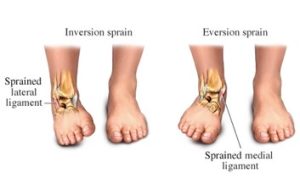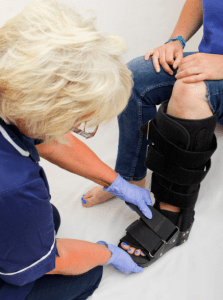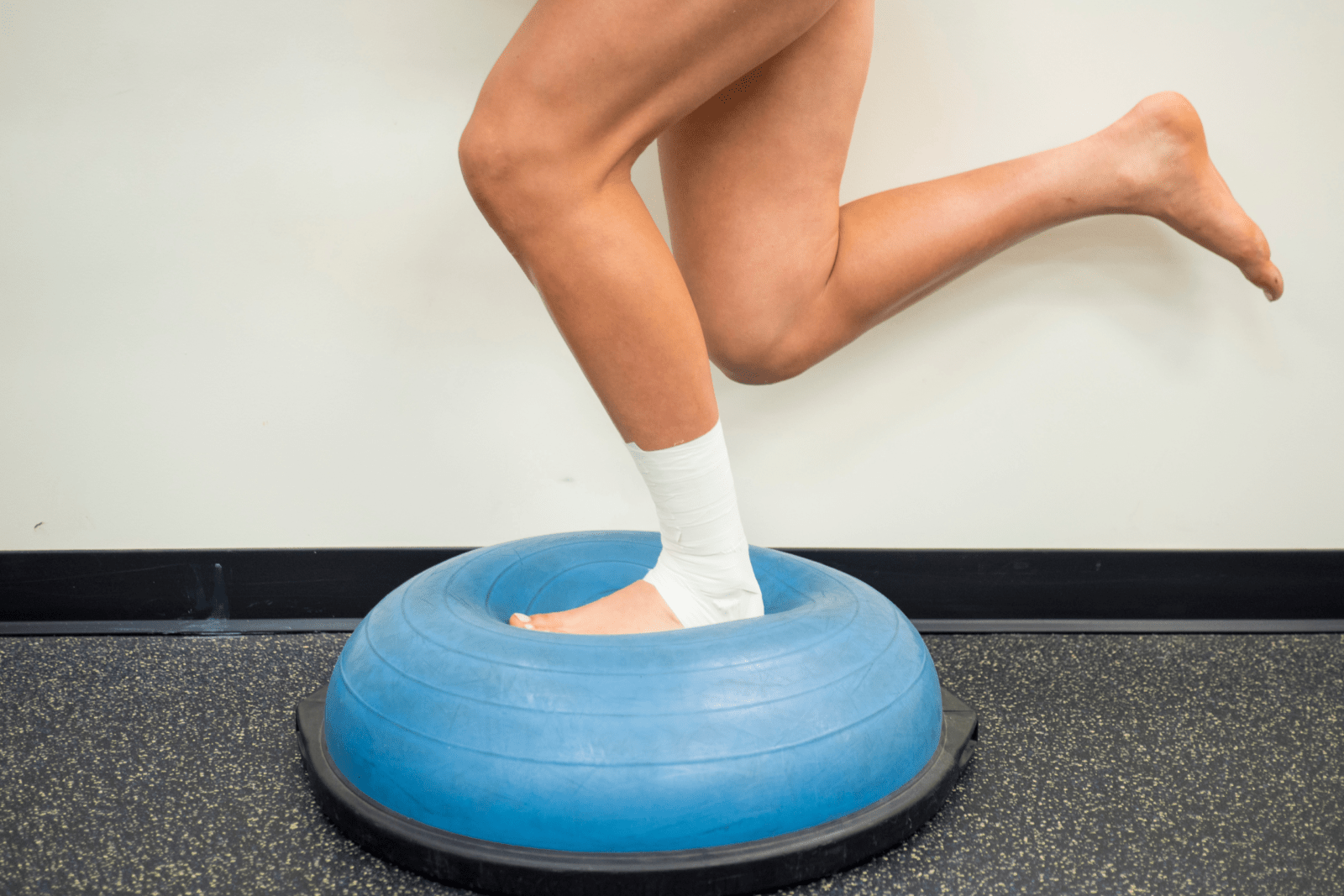Should you see a Physio after an Ankle Sprain?
An ankle sprain is a common musculoskeletal injury that can happen to everybody! It involves the stretching of ligaments on either side of the ankle which provide stability to the joint. You are more likely to suffering an ankle sprain if you’ve had ankle sprains in the past or are hypermobile.
More than 50% of the individuals who suffer a mild-moderate ankle sprain think it is not essential to get it treated, as the pain and swelling after ankle sprain settles down in 5-10 days. But according to scientific evidence and what we see in the clinics is that patients who avoid getting treated after the first sprain have an increased risk of sustaining another sprain which can lead to chronic ankle instability! Also there is evidence to show that you are more likely to sprain the other ankle too. A possible explanation for this high rate is an insufficient rehabilitation and/or a premature return to intense exercise and workloads.
Let’s understand the Anatomy behind ankle sprains:
Depending on the mechanism of injury, damage can be sustained to either the medial ligaments (inner ankle) or lateral ligaments (outer ankle).
Part of ankle |
Mechanism of injury |
Ligaments injured |
| Lateral/ Outer (most common) | Rolling of the foot inwards |
|
| Medial/ inner | Rolling of the foot outwards |
|
| High ankle sprain | Rolling of foot in/out
+ foot drives upwards towards shin |
|
 The level/ grade of sprain varies depending on how much of the ligament is damaged.
The level/ grade of sprain varies depending on how much of the ligament is damaged.
- Grade 1: represents slight stretching and damage to fibres of the ligament
- Grade 2: represents partial tear of the ligament
- Grade 3: represents complete rupture of the ligament
Sometimes there can be a bony fragment that can be pulled with the ligament and those ones can be pretty nasty! This requires immobilisation in the form of a CAM boot.
 We at Physico Physio do a proper assessment to rule out any fractures and assess which ligaments have been injured. Based on these assessments, we would either refer you for scans if necessary or assist you to put the injured ankle in the appropriate brace. We recommend seeing a physio even if your sprain was years ago. Chronic instability that goes untreated can lead to many more injuries that are avoidable with treatment! Book Now.
We at Physico Physio do a proper assessment to rule out any fractures and assess which ligaments have been injured. Based on these assessments, we would either refer you for scans if necessary or assist you to put the injured ankle in the appropriate brace. We recommend seeing a physio even if your sprain was years ago. Chronic instability that goes untreated can lead to many more injuries that are avoidable with treatment! Book Now.
Treatment:
Our treatment plans are made in conjunction with out patient’s goals and are as follows:
Phase 1: Prevent any re-injury to the ankle by protecting the ankle in correct brace/Taping/aircast to help with pain and swelling. This helps to heal the injured tissues. Educate about the do’s and don’ts. Prescribe exercises that are safe to do that would prevent any joint restriction/ muscle stiffness.
Phase 2: Partial return to function. Once pain and swelling has settled down which is around 7-10 days, re-introducing movements that are safe. Gait re-education forms a crucial part of this stage. Initiation of balance and proprioceptive exercises and basic strengthening for the ankle and foot.
Phase 3: Full return to function. Rehab focusses on strengthening exercises challenging on single leg stability and balance. Getting the patient ready to either return to their desired activity/sport.
The whole rehab can range anywhere from 4-12 weeks depending on the severity of the sprain. It is best to seek treatment the first time to return full function to reduce the chance of sustaining another sprain, as the recurrent sprains take longer to heal.
Ref:
Vuurberg, G., Hoorntje, A., Wink, L. M., van der Doelen, B. F. W., van den Bekerom, M. P., Dekker, R., van Dijk, C. N., Krips, R., Loogman, M. C. M., Ridderikhof, M. L., Smithuis, F. F., Stufkens, S. A. S., Verhagen, E. A. L. M., de Bie, R. A., & Kerkhoffs, G. M. M. J. (2018). Diagnosis, treatment and prevention of ankle sprains: update of an evidence-based clinical guideline. British journal of sports medicine, 52(15), 956. https://doi.org/10.1136/bjsports-2017-098106
Smith MD, Vicenzino B, Bahr R, et al Return to sport decisions after an acute lateral ankle sprain injury: introducing the PAASS framework—an international multidisciplinary consensus
British Journal of Sports Medicine 2021;55:1270-1276.

